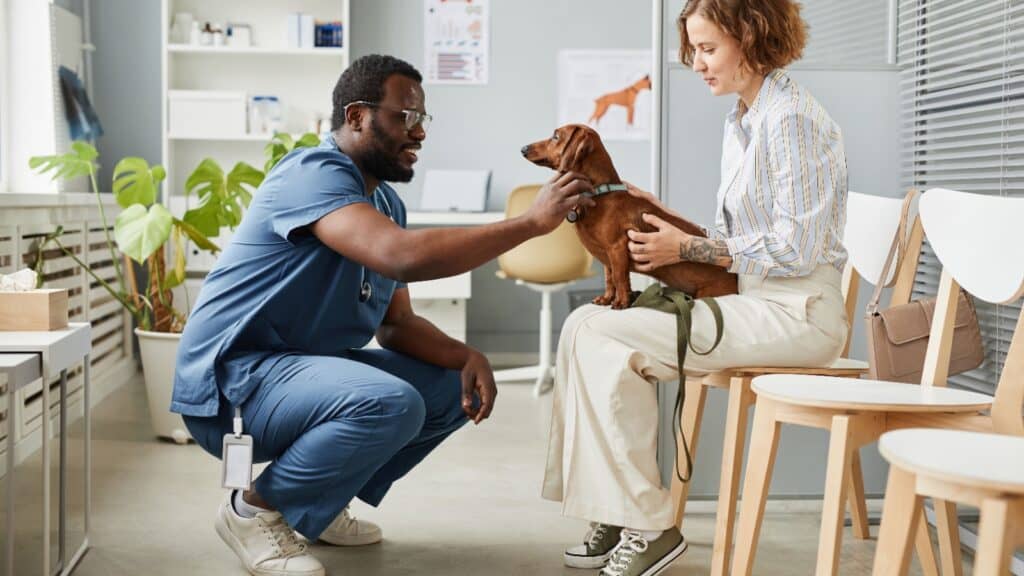Lost Pet? Follow These Steps to Bring Them Home Quickly
Losing a beloved pet is heartbreaking, but acting fast can make all the difference in bringing them home. The good news? There are steps you can take right away to boost your chances of a happy reunion—and things you can do now to help prevent it from happening in the first place. Here’s what to do if your pet goes missing and how to keep them safer in the future.
Immediate Steps to Take When Your Pet is Lost

There are many steps to take, the sooner the better:
Stay Calm and Assess the Situation

While it’s natural to panic when your pet goes missing, staying calm is crucial. Take a moment to think about where and when you last saw your pet. This information will help you focus your search efforts and provide accurate details to others.
Search Your Immediate Area

Start by thoroughly checking your home and surrounding areas. Pets often hide in places that are familiar to them. Look under beds, behind furniture, in closets, garages, or even nearby bushes and sheds. Call their name calmly and listen for any sounds of movement or distress.
Use Familiar Sounds and Scents

Bring items that carry your scent or your pet’s scent to attract them. Shaking a treat bag, squeaking a favorite toy, or opening a can of food can entice a hungry or scared pet to come out of hiding.
Alert Your Neighbors

Inform your neighbors about your missing pet and ask them to keep an eye out. Provide them with a recent photo and description. If your pet is friendly, they might approach others for help.
Create and Distribute Flyers

Design a clear and attention-grabbing flyer. Include a recent photo of your pet, their name, a brief description, and your contact information. Post these flyers around your neighborhood, local parks, veterinary clinics, and pet stores. Consider offering a reward as an incentive for people to assist in your search.
Leverage Social Media

Social media platforms are powerful tools for spreading the word quickly. Post on community groups, lost-and-found pet pages, and your own profile. Use clear photos, descriptions, and contact details. Encourage friends and followers to share your post widely.
Contact Local Animal Shelters and Rescues

Visit or call local animal shelters, rescues, and veterinary clinics to report your missing pet. Provide them with a photo and detailed description. Check back frequently, as new animals are brought in daily. We strongly suggest in-person visits.
Check Online Resources

Many websites specialize in helping people find lost pets. Sites like Petfinder, PawBoost, and Nextdoor allow you to post missing pet notices. They also provide tips on how to broaden your search.
Use a Microchip Database

If your pet is microchipped, notify the microchip company immediately. Ensure your contact information is up to date in their database. This is one of the most effective ways to be reunited with your pet if they are found by someone else.
Enlist Drone Services

Several companies have cropped up using drones, some with thermal technology, to help you locate a lost pet. They tend to be regional, so Google and find one near you.
Keep Searching and Stay Hopeful

Persistence is key. Many pets are reunited with their owners days or even weeks after going missing. Don’t lose hope and continue to follow up on any leads.
Preventing Your Pet From Getting Lost Again

Here are the steps to take to prevent your dog from getting lost again:
Ensure Proper Identification

Equip your pet with a secure collar and an ID tag that includes their name and your phone number. For cats and other pets that don’t wear collars, a microchip provides a permanent form of identification. Regularly update your contact information linked to the microchip.
Secure Your Home and Yard

Inspect your home and yard for any escape routes. Ensure that fences are tall enough, gates are securely latched, and there are no gaps where your pet could squeeze through. Screen windows and doors to prevent accidental escapes.
Consider Spaying or Neutering Your Pet

Spaying or neutering your pet reduces their tendency to roam, especially during mating seasons. This simple step can significantly lower the likelihood of your pet wandering off. On the other hand, early spaying/neutering can have negative long-term implications for your pet’s health, ranging from cancers to canine cruciate ligament rupture, to hip dysplasia issues. Please consult a breeder specializing in your breed, and your veterinarian.
Train Your Pet

Training your pet to come when called is a valuable skill. Use positive reinforcement techniques to teach them to respond to their name and return to you on command. Regular training sessions can strengthen this behavior.
Supervise Outdoor Time

Supervise your pet during outdoor playtime. If your pet enjoys spending time in the yard, consider investing in a GPS tracker or smart collar that allows you to monitor their location in real-time. Better yet, your dog should not be off-lead in an unfenced yard.
Leash Up

When walking your pet, always use a sturdy leash and harness. Even the most well-behaved pets can become frightened or distracted and run off. Double-check the fit of the harness to prevent slipping out.
Keep Them Engaged

Pets that are bored or under-stimulated are more likely to attempt an escape. Provide plenty of physical and mental stimulation through toys, exercise, and interaction. A tired pet is less likely to roam. Did you know that you can buy puzzles for your dog?
Socialize Your Pet

Proper socialization helps pets feel comfortable in various environments and reduces their likelihood of panicking and running away in unfamiliar situations. Expose your pet to different people, animals, and settings from a young age.
These are controlled situations. Letting dogs loose in a dog park is not proper socializing.
Have a Plan for Visitors and Deliveries

Many pets escape when doors or gates are accidentally left open by visitors or delivery personnel. Communicate with anyone entering your home about the importance of keeping doors and gates secure.
Prepare for Emergencies

Keep recent photos of your pet on hand and ensure their medical records, including proof of ownership, are easily accessible. This preparation can save precious time in the event your pet goes missing.
Conclusion

Losing a pet is a heartbreaking experience, but quick action and a strategic approach can improve your chances of being reunited. Equally important is implementing preventive measures to keep your pet safe in the future. By ensuring proper identification, securing your environment, and providing adequate training and engagement, you can reduce the risk of losing your beloved companion. Remember, vigilance and preparation are key to keeping your pet safe and sound.
Understanding the Surge in Veterinary Costs: Is It Becoming Too Expensive To Have A Pet?

If you own a pet, we bet you have noticed that veterinary care costs are escalating, leaving many of us with sticker shock and struggling to secure timely appointments. There are reasons for this burgeoning phenomenon; we unveil the many factors steering this surge.
READ: Understanding the Surge in Veterinary Costs: Is It Becoming Too Expensive To Have A Pet?
Join Us

Join us on this empowering journey as we explore, celebrate, and elevate “her story.” The Queen Zone is not just a platform; it’s a community where women from all walks of life can come together, share their experiences, and inspire one another. Welcome to a space where the female experience takes center stage. Sign up for our newsletter so you don’t miss a thing, Queen!






